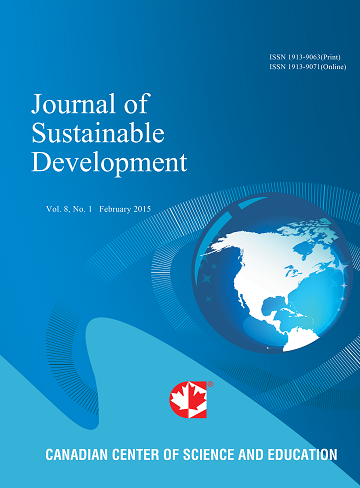Measuring Multidimensional Poverty in Conflict Zones: A Remote Sensing Method for the Tigray Conflict
- Weldeslassie Hailai Abera
- Claire Vermaak
- Abrha Megos Meressa
Abstract
This article examines the impracticality of household surveys in conflict settings. Instead, we utilise multiple satellite data sources to generate proxy indicators of welfare, an approach that reveals significant sources for creating meaningful proxy indicators. We applied a difference-in-difference method and a tailored poverty measurement for conflict contexts to analyse causality. This analysis highlights a severe economic decline during the Tigray conflict (2019-2021). Our findings indicate that by late 2021, 94.1% of Tigray's population was living in extreme multidimensional poverty, with an intensity of 91.3%, marking a sharp increase of 71.1% in the MPI (from 0.502 ± 0.035 to 0.858 ± 0.048).
We roughly attributed 82.0% ± 5.2% of this welfare decline to conflict through econometric modelling. Infrastructural collapse (69.2% reduction in nighttime light) and agricultural system failure (44.2% decrease in Normalised Difference Vegetation Index [NDVI]) are considerably more severe than what was observed in Syria (+38.0%), Yemen (+43.2%), and South Sudan (+47.5%), based on remote sensing data. Health experienced the most significant decline (+91.6%), followed by living standards (+65.8%) and education (+54.5%), according to dimensional decomposition.
Our Gaussian copula modelling method illustrates how different factors are interconnected, demonstrating the relationships between them. Cohen's modelling method shows how various factors are linked, and the reliability of the estimates is indicated by comparing them to real-world evaluations in 34-42% of woredas (Cohen's κ = 0.79), as well as by assessing uncertainty through 5,000 repeated tests. We identify three distinct impacts: health-focused, infrastructure-focused, and a combination of both, by analysing data at the woreda level, which allows for targeting solutions specific to each region. In addition to documenting Tigray's humanitarian crisis, this analytical approach offers a scalable method for welfare evaluation in conflict environments with limited data worldwide, thereby strengthening evidence-based plans for humanitarian response and development.
- Full Text:
 PDF
PDF
- DOI:10.5539/jsd.v18n5p1
Journal Metrics
Index
- Academic Journals Database
- ACNP
- AGRICOLA
- ANVUR (Italian National Agency for the Evaluation of Universities and Research Institutes)
- Berkeley Library
- CAB Abstracts
- CNKI Scholar
- COPAC
- CrossRef
- DTU Library
- EBSCOhost
- Elektronische Zeitschriftenbibliothek (EZB)
- EuroPub Database
- Excellence in Research for Australia (ERA)
- Genamics JournalSeek
- GETIT@YALE (Yale University Library)
- Ghent University Library
- Google Scholar
- Harvard Library
- INDEX ISLAMICUS
- Infotrieve
- Jisc Library Hub Discover
- JournalGuide
- JournalTOCs
- LOCKSS
- Max Planck Institutes
- MIAR
- Mir@bel
- NewJour
- Norwegian Centre for Research Data (NSD)
- Open J-Gate
- PKP Open Archives Harvester
- Pollution Abstracts
- Publons
- Pubmed journal list
- RePEc
- ROAD
- SafetyLit
- Scilit
- SHERPA/RoMEO
- Standard Periodical Directory
- Stanford Libraries
- UCR Library
- Ulrich's
- UniCat
- Universe Digital Library
- UoS Library
- WJCI Report
- WorldCat
- WorldWideScience
- Zeitschriften Daten Bank (ZDB)
Contact
- Sherry SunEditorial Assistant
- jsd@ccsenet.org
